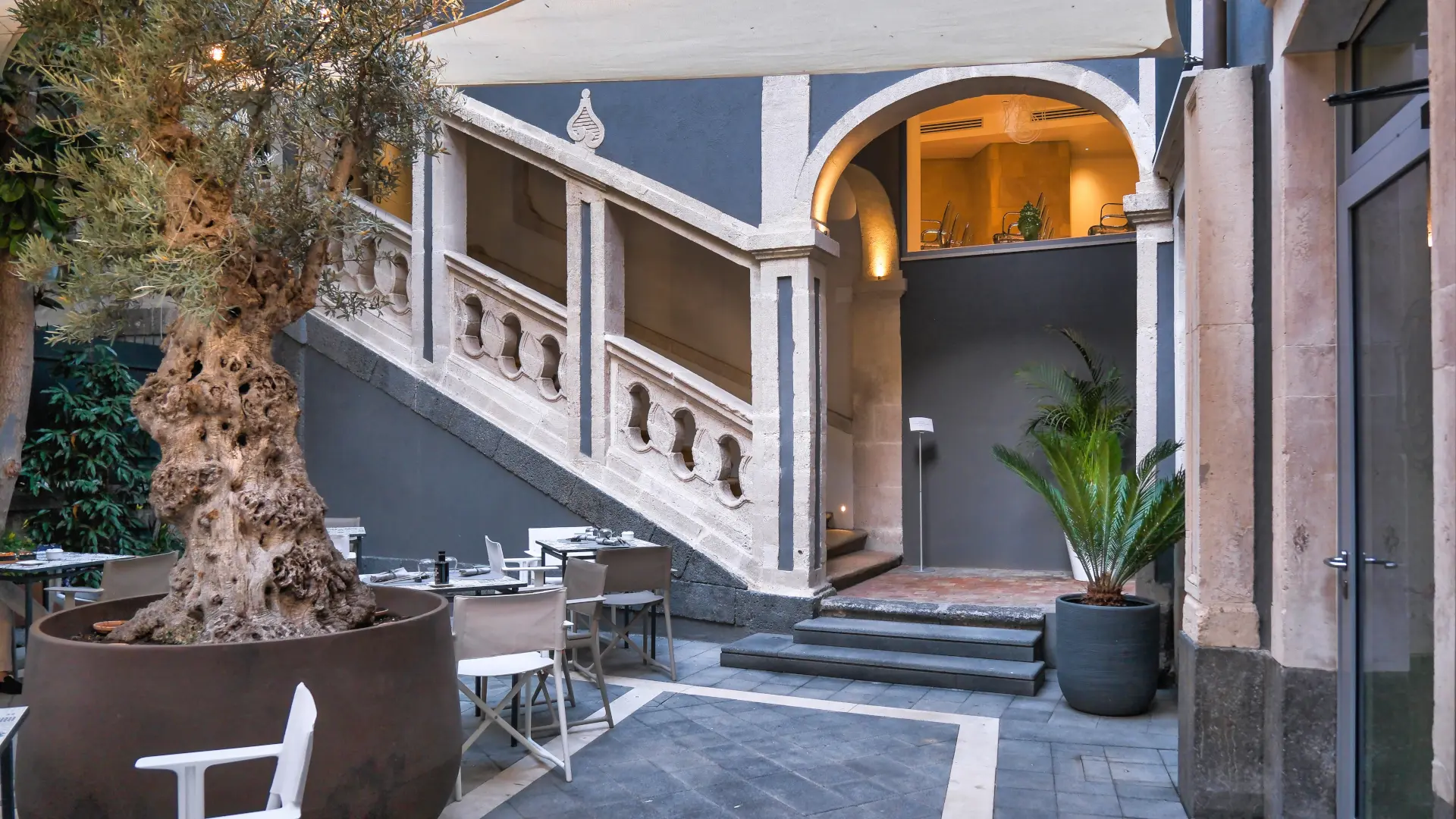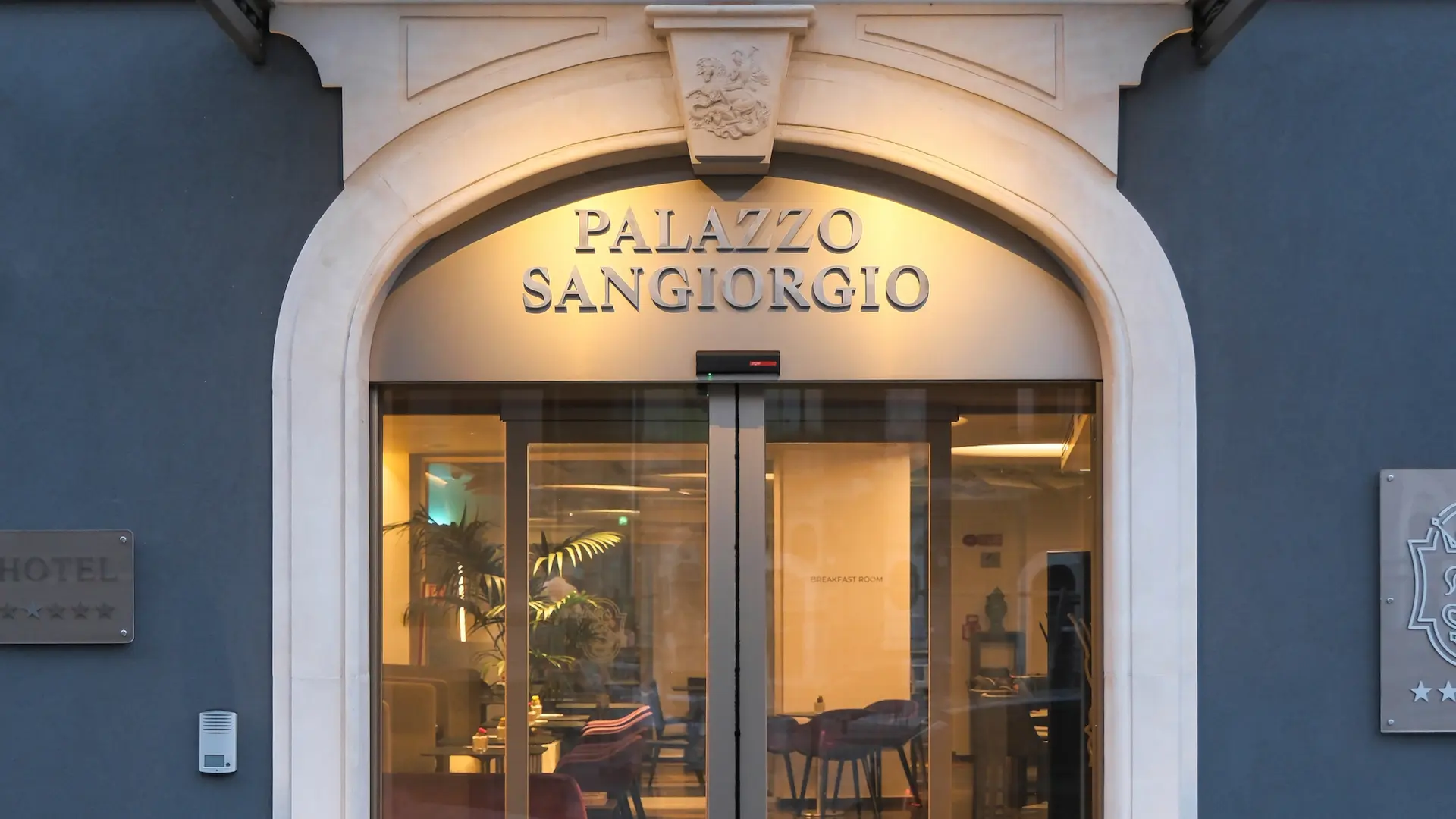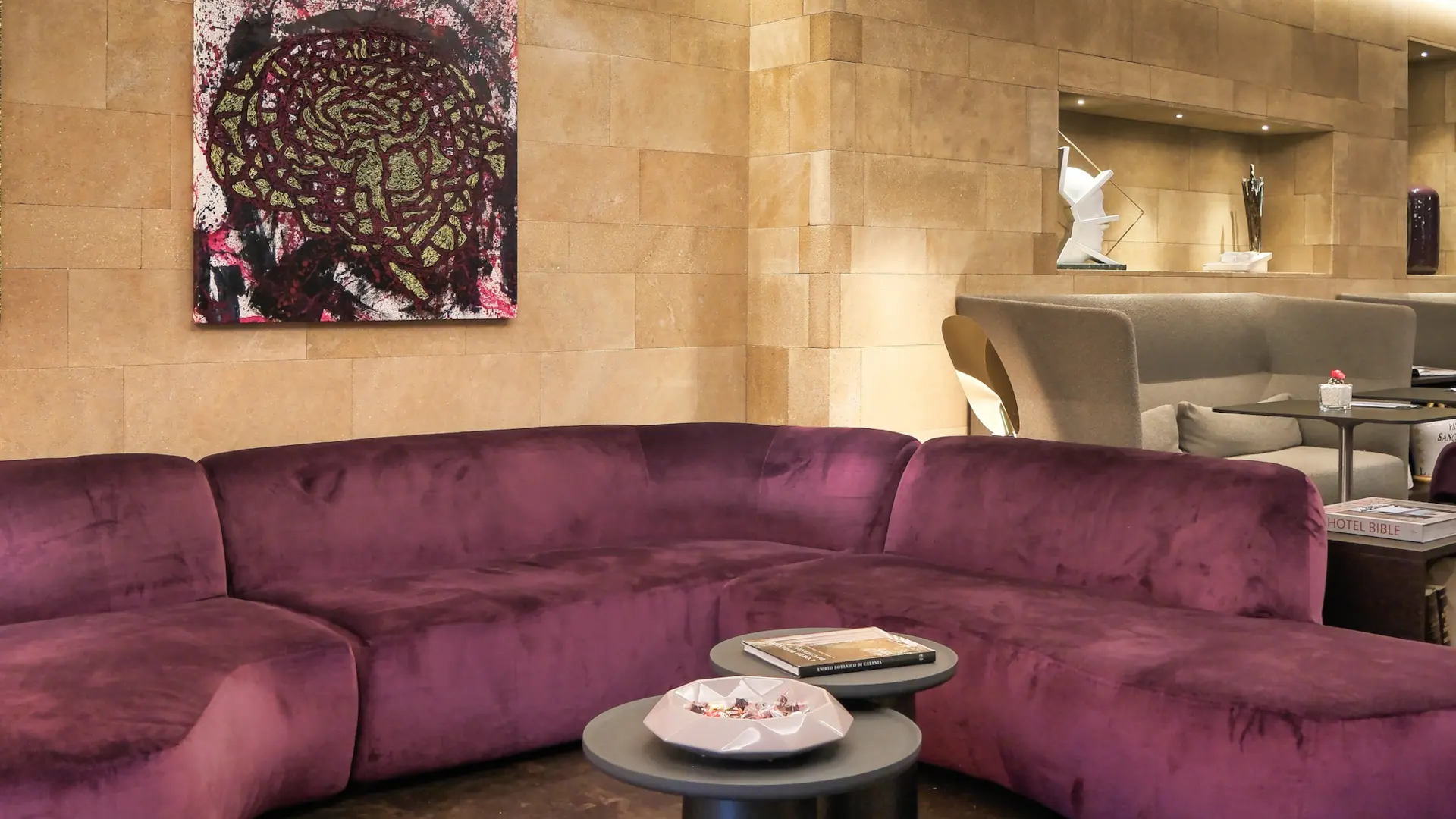Introducing Palazzo Sangiorgio
A refined hotel born from the noble remains of Palazzo Hernandez in Catania
The troubled yet fascinating history of Palazzo Sangiorgio begins when it was still known as Palazzo Hernandez and is inextricably intertwined over the centuries with the life of the city of Catania. The prestigious building that houses the new Palazzo Sangiorgio Hotel boasts a noble past brought to light and enhanced by the stylistic choices and charming details adopted during its renovation.
The building originated in the early 18th century at the behest of the Hernandez family, a noble dynasty of Spanish origin, from which it took its name. They intended it as a temporary residence to manage their dealings in the city. The Baroque rebirth of Catania, following the 1693 earthquake, permeates the design of the palace commissioned to architect Giovanni Battista Vaccarini.
An Intense History
Decades of changes for the noble Palazzo Sangiorgio
However, the eminent Baroque architect Vaccarini managed to complete only the rampant portico with the double staircase in the polygonal inner courtyard. He died without seeing the fruits of his work, which would have elevated Palazzo Hernandez to the level of its more famous counterparts, Palazzo Biscari and Palazzo Platamone (now Palazzo della Cultura).
Palazzo Hernandez underwent decades of further instability over which it was inhabited by various aristocratic families. Continuous alterations made its original architecture unrecognisable, with an overlay of styles and tastes reflecting different eras, and not always kind to this noble creation.
Restoration and Rebirth
Today, the ancient Palazzo Hernandez sheds its name and acquires that of Nino Sangiorgio, who strongly desired its revival.
Thanks to the work of architects Michele and Solaria Sclafani, who led the project under the supervision of the Sopraintendenza per i Beni Culturali e Ambientali di Catania, the new Palazzo
Sangiorgio has regained dignity and splendour and has brought renewed light to the entire area, rightfully entering, along with other nearby Baroque palaces, among Catania's most prestigious noble buildings.








